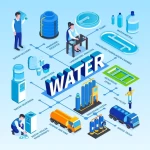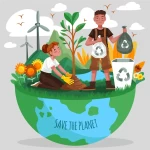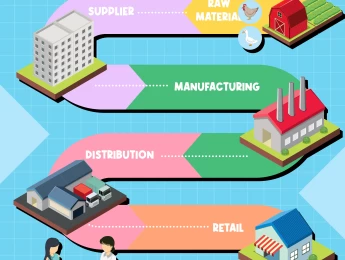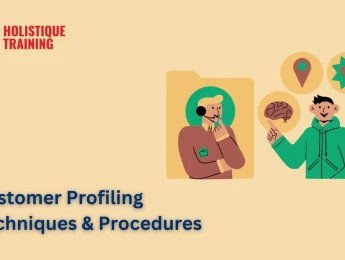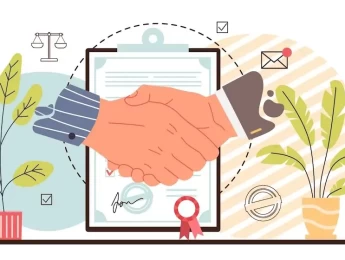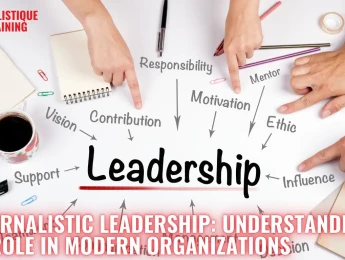Oil spills are catastrophic events that have profound and far-reaching consequences on the environment, especially marine ecosystems. These spills occur due to accidents during transportation, drilling, or production of oil and have devastating effects on marine life, coastal communities, and overall ecological balance. In this blog post, we will delve into the factors that contribute to oil spills, the impact they have on marine life, the existing cleanup measures, and the imperative need to do better to prevent and mitigate such disasters in the future.
How Do Oil Spills Happen?
Oil spills can be categorised into two main types: accidental spills and operational spills. Accidental spills are primarily caused by tanker accidents, pipeline ruptures, and platform blowouts. Such incidents often occur during adverse weather conditions or due to technical failures, leading to large-scale leakage of oil into marine environments.
Operational spills, on the other hand, result from routine activities related to oil production, storage, and transportation. These smaller, chronic spills can be equally harmful to the environment over time. Human errors, equipment malfunctions, and inadequate maintenance can all contribute to operational oil spills.
Regardless of the cause, the consequences of an oil spill can be devastating to marine ecosystems and coastal communities, making it vital to understand how to effectively respond and clean up after such disasters.
Statistics
According to ITOPF data, there were seven tanker incidents causing oil spills of more than seven tonnes in 2022. This brings the average for the decade to nearly six, aligning with the figures seen in the 2010s and indicating a significant decrease from earlier decades.
Who Cleans Up an Oil Spill — and How?
When an oil spill occurs, the urgent need for cleanup becomes paramount to mitigate its environmental impact. The responsibility for this challenging task is distributed among multiple stakeholders, including government agencies, oil companies, and environmental organisations. The complexity of oil spill response requires a combination of techniques and technologies to address the immediate and long-term effects of these disasters.
Immediate Response
1. Containment Strategies: Booms and Skimmers
The first line of defence in an oil spill response is containment. Booms, large floating barriers, are strategically deployed to corral and contain the spreading oil, preventing it from reaching vulnerable areas. Booms are particularly effective in sheltered waters and can be used to protect shorelines, estuaries, and sensitive ecosystems.
Following containment, skimmers are employed to physically remove the oil from the water's surface. These specialised vessels use various mechanisms, such as suction or absorbent materials, to collect the oil. However, these measures are not foolproof, and a significant portion of the spilled oil often evades capture.
2. Sorbents and Dispersants
To address the oil that escapes containment, sorbents are used. These materials, including natural fibres or synthetic polymers, absorb and encapsulate the oil, facilitating its removal. Dispersants, although controversial due to their environmental impact, are sometimes employed to break down the oil into smaller droplets. This makes it less visible on the water's surface and aids in natural degradation, albeit with potential harm to marine life.
Advanced Response Techniques
3. Controlled Burning
In cases of extensive spills, controlled burning is a technique employed to remove oil from the water's surface. This process involves igniting the oil slick under controlled conditions. While this method can be effective, it comes with its own set of environmental risks, including air pollution and the release of harmful substances into the atmosphere.
4. Bioremediation
A more environmentally friendly approach involves the use of bioremediation. This innovative technique utilises naturally occurring microorganisms to break down the oil into less harmful components. Bioremediation offers a more sustainable solution, promoting the natural degradation of oil without introducing additional chemicals into the environment.
Challenges in Oil Spill Cleanup
While these response measures are critical, they come with inherent challenges. The vastness of the affected areas, unpredictable weather conditions, and the persistence of oil in different forms present significant obstacles to effective cleanup. Furthermore, the environmental consequences of some cleanup methods, such as the use of dispersants or controlled burning, underscore the need for continuous research into safer and more efficient alternatives.
Table 1: Cleanup Measures and Environmental Impact
Cleanup Measure | Description | Environmental Impact |
Booms | Large barriers to corral and contain spreading oil. | Partially effective; oil can escape. |
Skimmers | Remove oil from the water's surface. | Limited in addressing dispersed oil. |
Controlled Burning | Burns off oil from the water's surface. | Risk of air pollution. |
Dispersants | Break down oil into smaller droplets. | Introduces toxic elements; potential harm. |
Bioremediation | Uses microorganisms to break down the oil. | Environmentally friendly; promotes degradation. |
Collaborative Efforts in Cleanup
Cleanup operations are often collaborative endeavours, pooling resources and expertise from various sectors. Government agencies play a crucial role in coordinating these efforts, ensuring a unified and organised response. Local communities, especially those directly affected, may also participate in cleanup initiatives, fostering a sense of responsibility and community engagement.
Despite these efforts, the aftermath of an oil spill is a long-term challenge. Monitoring and assessing the environmental impact over an extended period are essential to understand the full scope of the damage and inform future response strategies.
In short, the cleanup of oil spills demands a multifaceted approach, combining immediate response measures with advanced technologies and sustainable techniques. The collaborative efforts of governments, industries, and environmental organisations are essential in minimising the devastating impact of these disasters on marine ecosystems and coastal communities. Continuous research into innovative cleanup technologies and a commitment to preventive measures are crucial steps toward building a more resilient and sustainable future.
Effects of Oil Spills on Marine Life
The impact of oil spills on marine life is immense and long-lasting. When oil contaminates the water, it forms a toxic layer that affects various species in different ways.
1- Marine Fauna
The direct impact of oil spills on fish, marine mammals, and seabirds is devastating. When these animals come into contact with oil, it coats their feathers or fur, compromising their buoyancy and insulation. This makes them vulnerable to hypothermia and drowning. The toxic nature of the oil poses a more insidious threat: ingestion. Predators consuming oil-contaminated prey risk poisoning and internal organ damage, often resulting in mortality.
The aftermath of an oil spill includes heart-wrenching images of oil-coated seabirds struggling to fly and marine mammals desperately navigating through slicks. Beyond the immediate casualties, the long-term effects on populations can be severe, disrupting the balance of marine ecosystems.
2- Coral Reefs
Coral reefs, often hailed as the rainforests of the sea, are incredibly sensitive ecosystems. Even small amounts of oil can wreak havoc on these delicate structures. When oil enters coral reef environments, it clogs the coral's intricate structures, hindering proper oxygenation and light penetration.
This interference leads to coral bleaching, a phenomenon where corals expel the symbiotic algae that provide them with nutrients and colour. Without these algae, corals lose their vibrant hues and become susceptible to disease. Prolonged exposure to oil can result in the death of coral reefs, with consequences that extend to the myriad marine species relying on these habitats for shelter and sustenance.
3- Phytoplankton
Phytoplankton, the microscopic plants that form the foundation of marine food webs, are essential for the health of oceans. They play a crucial role in oxygen production and carbon dioxide absorption. Oil spills disrupt the life cycle of phytoplankton, impacting their ability to carry out these vital functions.
As oil spreads across the water's surface, it creates a toxic layer that hampers the growth and reproduction of phytoplankton. The reduced abundance of these microscopic organisms has a cascading effect on the entire marine ecosystem. With less phytoplankton available, the amount of oxygen produced decreases, leading to a decline in oxygen levels in the water.
4- Benthic Organisms
Oil spills don't just affect the surface of the water; they also have consequences for benthic organisms that reside on the ocean floor. Clams, mussels, and worms, among other benthic creatures, play a vital role in nutrient recycling and serve as a food source for larger marine species.
As oil sinks and accumulates in sediment, it poses a direct threat to benthic organisms. The toxic components of the oil can lead to the death of these creatures or a decline in their populations, disrupting the intricate balance of the ocean's food chain. The ramifications extend beyond the benthic zone, influencing the abundance and health of higher trophic levels.
Long-Term Consequences
The effects of oil spills on marine life are not confined to the immediate aftermath of the event. Long-term consequences persist as ecosystems struggle to recover. Monitoring and research are crucial in understanding the ongoing impact, guiding restoration efforts, and informing future preventive measures.
In summary, the devastation wrought by oil spills on marine life emphasises the need for comprehensive and sustained conservation efforts. From the smallest phytoplankton to the grandeur of coral reefs, every component of the marine ecosystem is intricately connected. As custodians of these environments, it is our responsibility to demand better preventive measures, improved response techniques, and a commitment to sustainable practices that protect our oceans and the life they sustain.
How Can We Do Better?
Amidst the harrowing impact of oil spills on marine ecosystems, it is imperative to explore how we can enhance our response and preventive measures to mitigate these disasters effectively:
1- Preventative Measures
The most effective strategy for mitigating oil spills is prevention. Governments and industries must invest in robust safety regulations, routine equipment maintenance, and regular inspections of pipelines, drilling platforms, and transport vessels. Implementing and enforcing stringent safety measures can significantly reduce the likelihood of spills occurring in the first place.
Advanced technologies, such as remote sensing and monitoring systems, can play a pivotal role in early detection of potential issues, allowing for swift intervention. Additionally, risk assessment measures should be continually updated to adapt to evolving technologies and industry practices, ensuring a proactive rather than reactive approach to safety.
2- Promote Renewable Energy
A fundamental shift towards renewable energy sources, such as wind, solar, and hydroelectric power, is crucial in decreasing our dependence on oil. Embracing cleaner alternatives not only reduces the frequency of oil spills but also addresses the broader issue of environmental sustainability.
Governments can incentivise the adoption of renewable energy by offering subsidies, tax breaks, and investing in research and development. Transitioning to a renewable energy-driven economy not only benefits the environment but also fosters economic growth in the burgeoning green energy sector.
3- Improve Spill Response Techniques
Research and development play a pivotal role in enhancing oil spill response techniques. Investing in innovative cleanup technologies can revolutionise our ability to address spills more efficiently and with minimal environmental impact.
Bioremediation, for instance, shows promise as a sustainable cleanup method. This technique utilises naturally occurring microorganisms to break down oil into less harmful components. Additionally, the development of robotic technology and artificial intelligence can significantly enhance the speed and precision of cleanup efforts, especially in challenging and remote environments.
4- Strengthen Collaboration
Collaboration is key in effectively responding to oil spills. Governments, oil companies, environmental organisations, and local communities must work together to establish coordinated response plans. Sharing knowledge, resources, and expertise enhances our collective ability to combat these disasters.
Regular joint exercises and simulations can help streamline communication and response efforts in the event of an actual spill. Furthermore, establishing international agreements and protocols for transboundary spills ensures a unified global response, acknowledging that the consequences of oil spills often transcend national borders.
5- Raise Awareness
Increasing public awareness about the consequences of oil spills is crucial in garnering support for preventative measures and cleaner energy initiatives. Education and engagement empower individuals to make informed choices and advocate for more stringent environmental policies.
Initiatives like community workshops, educational programs in schools, and public awareness campaigns can significantly contribute to changing behaviours and fostering a sense of responsibility towards the environment. Public pressure can also drive industries and governments to prioritise sustainable practices and invest in technologies that reduce the likelihood and impact of oil spills.
In summary, addressing the devastating impact of oil spills necessitates a comprehensive and multifaceted approach. From preventive measures and renewable energy adoption to innovative cleanup technologies and collaborative efforts, the path forward requires a collective commitment to safeguarding our oceans.
By investing in research and development, fostering collaboration, and raising awareness, we can collectively strive towards a future where oil spills are rare occurrences, and the devastating impact on our environment is minimised. It is a shared responsibility as stewards of the planet to demand better preventive measures, improve response techniques, and support renewable energy alternatives. Only through such collective efforts can we truly protect the future of our planet for generations to come.
Innovative Technologies in Oil Spill Response
The landscape of oil spill response is evolving rapidly with the integration of cutting-edge technologies that promise more efficient and environmentally friendly cleanup processes. These innovative solutions leverage advancements in robotics, artificial intelligence, and sensor technologies to revolutionise our approach to mitigating the impact of oil spills.
1. Underwater Drones
Underwater drones equipped with high-resolution cameras and sensors have emerged as invaluable tools in oil spill response. These unmanned vehicles can navigate the depths of the ocean to assess the extent of the spill, identify affected areas, and monitor the efficacy of cleanup operations. Their ability to reach remote and challenging locations ensures a more comprehensive understanding of the environmental impact.
As technology continues to advance, underwater drones are being enhanced with real-time data transmission capabilities, enabling rapid decision-making and coordination between response teams. These silent guardians of the ocean contribute to a more precise and targeted cleanup effort.
2. Artificial Intelligence
Artificial intelligence (AI) is playing a pivotal role in optimising the efficiency of oil spill response. AI algorithms process vast amounts of data, including satellite imagery, weather patterns, and ocean currents, to predict the trajectory of the spill. This predictive capability enables response teams to strategically deploy resources, such as booms and skimmers, to areas most likely to be affected.
Moreover, AI-driven analysis aids in the real-time assessment of the effectiveness of different cleanup techniques. By continuously learning from data inputs, AI algorithms adapt and refine their predictions, providing a dynamic and evolving response strategy. This not only minimises the environmental impact but also enhances the overall speed and precision of cleanup operations.
3. Advanced Sensors
The integration of advanced sensors has elevated the precision and effectiveness of oil spill response. These sensors can detect oil in various forms, from surface slicks to dispersed droplets and submerged plumes. Real-time data from these sensors allows response teams to adjust their strategies on the fly, ensuring a targeted and adaptive approach.
Additionally, sensor technologies play a crucial role in monitoring the environmental impact of cleanup efforts. By assessing factors such as water quality, marine life presence, and ecosystem health, these sensors provide valuable feedback that helps refine cleanup techniques and minimise collateral damage to the environment.
4. Integration of Robotics
Robotic technology is being increasingly integrated into oil spill response efforts, offering a mechanised and precise approach to cleanup operations. Unmanned Aerial Vehicles (UAVs) equipped with infrared cameras and LiDAR technology can survey large areas, identify oil concentrations, and assess the effectiveness of containment measures from above.
On the water's surface, autonomous surface vehicles (ASVs) equipped with skimming and sorbent capabilities can navigate oil-contaminated areas without putting human operators at risk. These robotic assets enhance the overall efficiency and safety of cleanup operations, particularly in challenging or hazardous environments.
5. Ongoing Research and Development
The field of innovative technologies in oil spill response is continually evolving through ongoing research and development. Scientists and engineers are exploring new materials for improved sorbents, refining the capabilities of underwater drones for deeper exploration, and developing biodegradable alternatives to traditional cleanup methods.
The collaboration between academia, industry, and government agencies in research initiatives ensures that the latest technological advancements are integrated into oil spill response protocols. By pushing the boundaries of what is possible, the aim is to develop increasingly effective, sustainable, and environmentally friendly solutions to mitigate the impact of oil spills on marine ecosystems.
In short, the integration of innovative technologies is transforming the landscape of oil spill response. From underwater drones providing unprecedented visibility to AI optimising decision-making, these technologies offer a glimpse into a future where the environmental impact of oil spills can be minimised with unprecedented precision and efficiency. The ongoing commitment to research and development ensures that the tools at our disposal will continue to evolve, providing ever-improving solutions to the complex challenge of mitigating oil spill disasters.
Conclusion
The environmental impact of oil spills is an alarming reminder of the fragility of our planet's marine ecosystems. The consequences of these disasters ripple through the food chain, affecting marine life, coastal communities, and the global environment. As custodians of this planet, it is our responsibility to demand better preventive measures, improve response techniques, and support renewable energy alternatives.
By investing in research and development, fostering collaboration, and raising awareness, we can collectively strive towards a future where oil spills are rare occurrences and the devastating impact on our environment is minimised. Together, let us work towards a cleaner and more sustainable world, where we prioritise the protection of our oceans and the life they sustain. Only then can we truly do better and safeguard the future of our planet for generations to come.
If you are passionate about safeguarding our oceans and combating marine pollution, make sure you check out our course, ‘Principles of Marine Pollution Management,’ where you can gain in-depth knowledge and practical skills to become a proactive advocate for our precious marine ecosystems. Together, let's make a difference and protect our oceans for generations to come.



